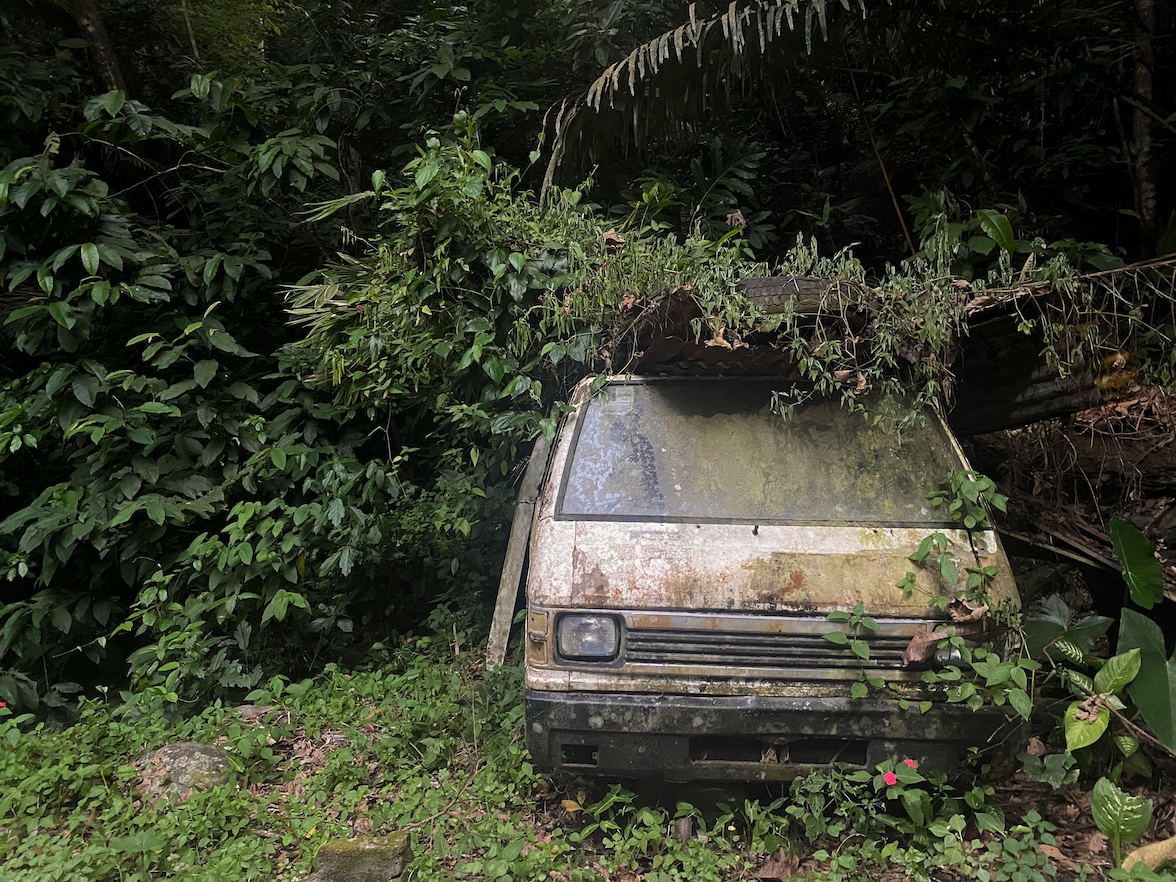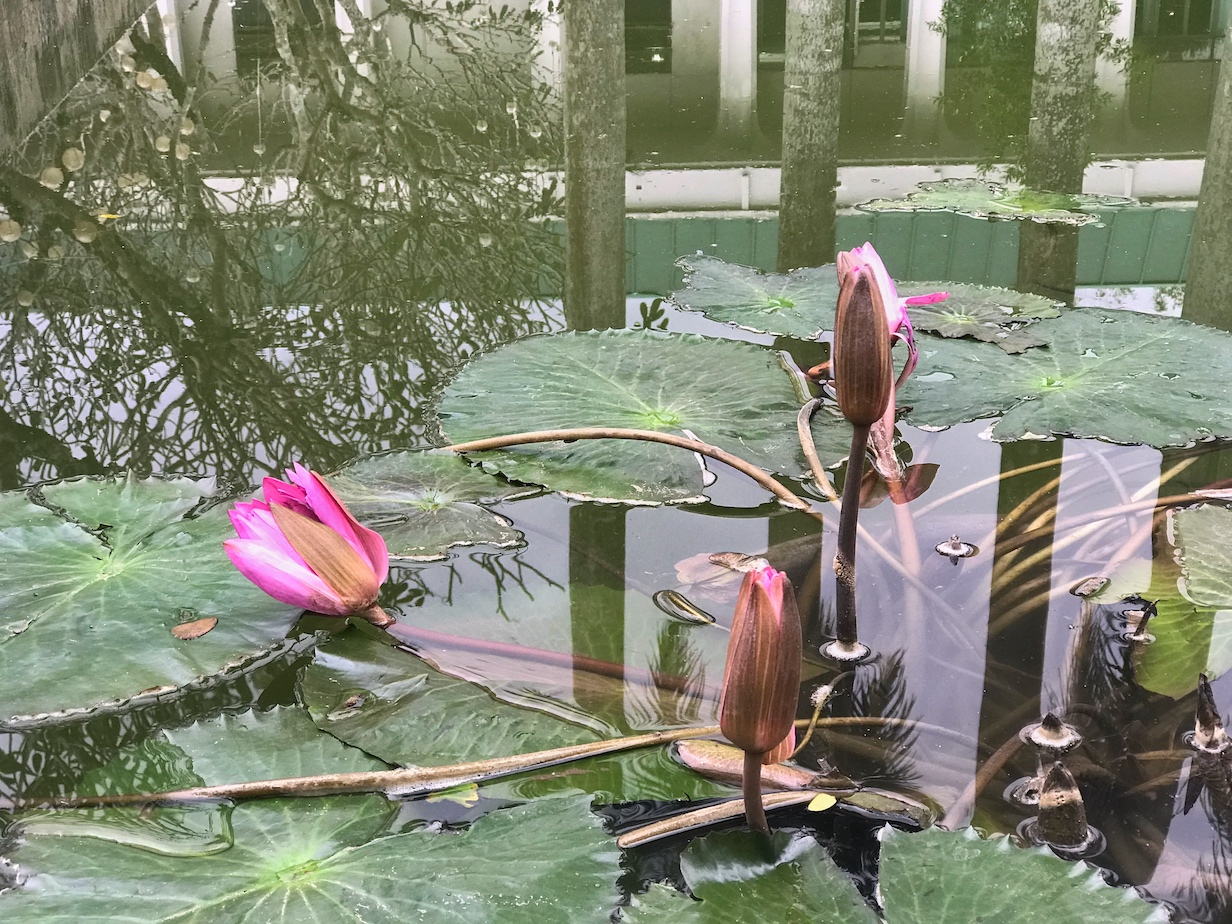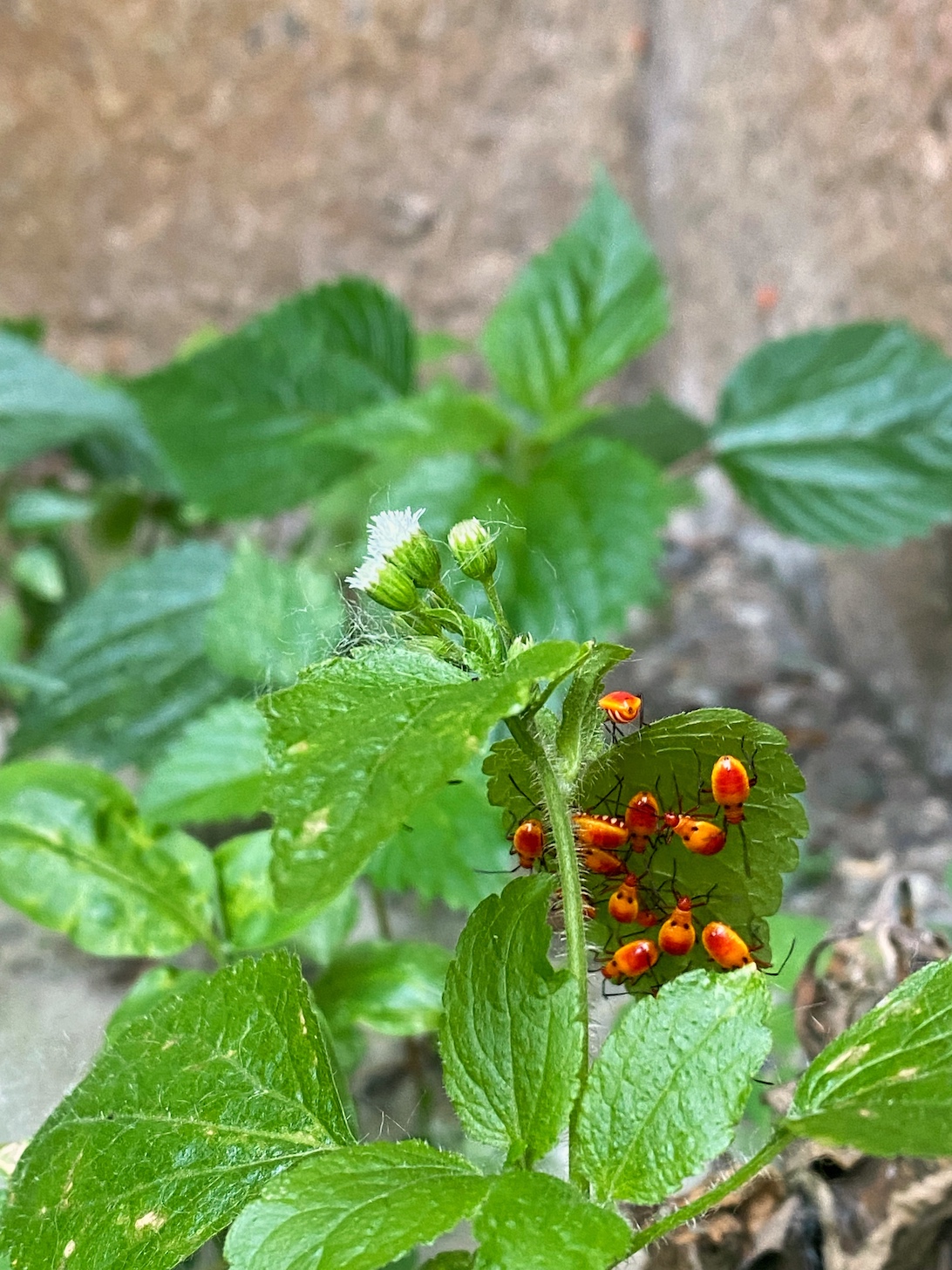
I walk out the door and immediately feel the heat sting. A huge rain cloud is forming in the southwest, but the rest of the sky is azure.
At Carabao Park, I look up at the trees, and they all feel strange to me. I am in awe, and yet I know none of them. Is this what the ancient animists felt as they bowed beneath these giants?
It isn’t easy to love that which we cannot name. And it is even more difficult to love that which cannot talk because it cannot tell its story. And we need stories to understand someone. Without stories, I wonder how we can ever love trees, mountains, birds.
It seems then that the natural sciences is the language through which we can uncover these stories. A jump-off point for conversing with the natural world. Through science, we observe plants, animals, rocks, soil—all non-speaking entities—to understand where they come from, what they want, where they are going. They talk through their actions, through non-human sounds, and we interpret them by deducing the patterns they create. When I walk and see that the kapok has stopped producing new cotton, and those that fell are melting under the sun, I know that it was done colonizing open areas, and summer is closing soon.
Perhaps this is why Thoreau and Dillard cared a lot about the natural sciences as much as they loved poetry. Through the natural sciences, they established that familiarity with the subject of their writing. They were able to call plants, animals, and even geographic locations by their names. And with calling them by their names comes the possibility of real connection.

The natural world talks by simply being itself. It speaks by moving, doing what it has to do. Thoreau and Dillard listened through their eyes, ears, tongues, and hands with the lens of science and, from there, responded through poetry.
But the natural world does not understand the language of man. It does not understand poetry. It only understands the language of action. So when Thoreau and Dillard heard nature and responded through poetry, they were not really talking back to nature. They were talking to their own kind.
Nature then is perhaps Deaf. It does not speak words. It speaks through signs. Its language is visual. It makes sounds, but looking at it is enough to get what it is saying. A flower blooms, and you know soon its seeds will burst. It wants to give birth, to continue life. And nature comprehends signs, too, comprehends kindness.
You can talk about conserving nature nonstop, but nature won’t understand you until you strike a stick to the ground to support a dying plant. Nature talks through actions, listens through actions—actions which Thoreau was not prepared to perform at his time. As he developed his listening to the natural world, he also grappled with questions on vegetarianism and environmentalism. John Muir would be the one to take what Thoreau heard from nature and respond through actions that reverberated through generations—actions that nature finally heard.
The sound of the palm leaves shaking is like water falling. I say goodbye to the trees and move on.
The view of Molawin creek from above the never-ending bridge is never-ending beauty. If there ever is a curator of rocks, this part of the creek was curated. At 4 pm, the rocks are photographic. The light that pierces the canopy of trees touches the rocks gently, and the water sparkles from afar.
Along the rocks, the water flows fast. A mini rapid. Then it weakens as it reaches a large pool, the part of the creek below the bridge itself, which is deeper, rockless. Here, the water rests as if it was its home.
Occasionally, the water crumples. Either something from above falls or something from below moves. Whatever falls, I do not see. Whatever moves below is a mystery.
Everything here is silent if not for the occasional car and walker that passes by the bridge or the birds that glide from one tree to the next.
I leave the bridge and walk for a while along the stoned path beside Umali Hall. I pick up a piece of kapok and sit down on one of the hall’s foundations.
This kapok is unlike the cotton I use at home. Silky, it feels like the comforters I covered myself with as I finished my thesis in Baguio. The seed around which it is wrapped feels like a dried corn seed. It even looks like it—a dark brown corn seed.
The kapok takes on the smell of whatever it lands into. As I pick it up, it smells like grass. Now that I hold it in my hand, it smells like the peanuts I ate at home.
I remember Doji’s fur as I roll the kapok between my thumb, index, and middle fingers. It looks like Doji’s fur. It is as if someone cut the hair off one big Doji from heaven, and they all fell from the sky.
I look at all of Doji’s fur around me. Some of them were already melted by previous rains. Some orange bugs seem attracted to the small clover-shaped plants that grow between stones where the kapok have fallen. These are tiny orange bugs. As I get up and continue walking the stone path, I notice bigger bugs—also orange—mating out in the open. They look like orange versions of that bug my mom used to hate so much back in Pangasinan. It bites you, and when it does, it leaves a small evil needle beneath your skin. This needle hurts so bad. Bad, bad evil needle.

On the bridge toward IRRI housing, the creek is difficult to see. The foliage is thick. But you can still hear the river flow.
I read a few pages of Dillard’s book as I rest on the side of Drillon road. I raise my head, and I see an unknown bird fly. It vanishes behind a tree. A few seconds later, I hear the air roar, and a thin sheet of a white line appears in the sky. I watch it as it traverses endless blue.
As I walk back home, the cicadas sound a deafening siren. A black dog barks as it approaches me. On my face, the wind blows as the night weaves a mask of darkness with no eyes.